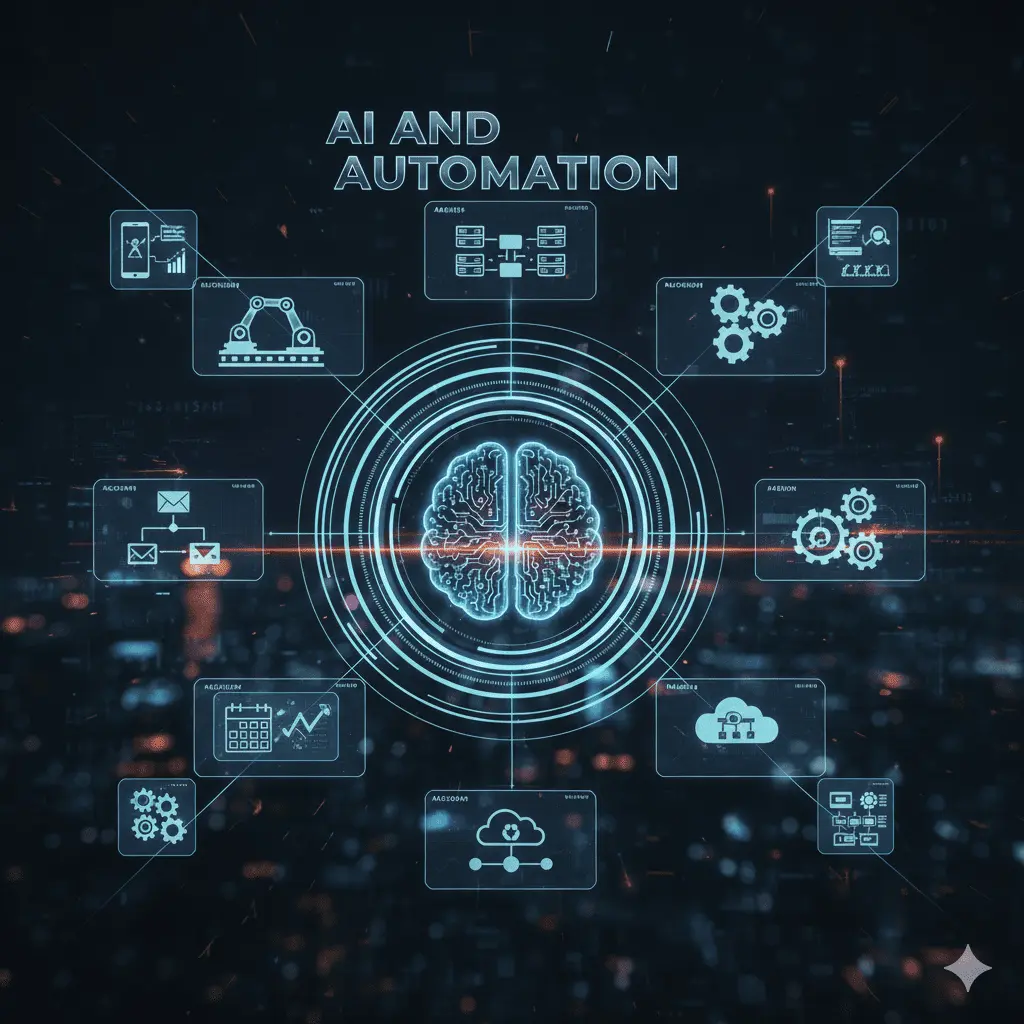Introduction
In today’s digital-first world, AI and automation are reshaping how businesses operate, make decisions, and deliver value. From marketing campaigns to testing workflows, organizations are using Artificial Intelligence (AI) to eliminate repetitive tasks and optimize productivity. For beginners exploring AI automation, the opportunity lies in leveraging data, machine learning, and predictive analytics to improve every layer of business performance. Whether it’s automating emails, quality assurance, or customer engagement, integrating AI into business processes is no longer optional — it’s essential for staying competitive and efficient.
Materials & Tools
Implementing AI and automation requires a strategic combination of tools and platforms tailored to specific business needs. Here are some essentials:
-
AI Workflow Automation Platforms: Tools like Zapier, Make (formerly Integromat), and UiPath connect your applications, automate triggers, and streamline processes.
-
AI Marketing Automation Tools: Platforms like HubSpot, Marketo, and ActiveCampaign enhance customer segmentation, personalization, and lead nurturing.
-
AI Test Automation Suites: Tools such as Testim, Selenium, and Applitools leverage AI to detect changes and optimize test coverage.
-
AI Business Process Automation Solutions: Tools like Automation Anywhere and Blue Prism help enterprises automate document management, invoice processing, and HR operations.
Choosing the best tool for AI automation depends on your objectives, scalability needs, and integration compatibility.
Timing / Implementation Schedule
The timeline for integrating AI and automation varies based on complexity and organizational readiness. A typical implementation schedule may look like this:
-
Week 1–2: Define project goals, assess workflows, and identify automation opportunities.
-
Week 3–4: Research tools and set up pilot programs for small-scale automation.
-
Month 2: Integrate AI systems across departments (marketing, testing, or operations).
-
Month 3–4: Analyze performance metrics, optimize workflows, and scale successful automation models.
With consistent monitoring and iterative improvements, businesses can see measurable results within three months.
Preparation: Define Goals, Audience, and Content Strategy
Before implementing AI and automation, it’s essential to set clear objectives:
-
Define Goals: Decide what to automate — marketing tasks, workflows, testing, or data analysis.
-
Identify Audience: Understand how automation will impact your customers, employees, and stakeholders.
-
Build a Content Strategy: If applying automation to marketing, align AI-generated insights with personalized content delivery to boost engagement.
By mapping each automation goal to a measurable outcome (like time saved or conversions increased), you ensure your investment in AI delivers tangible results.
Step-by-Step Instructions
-
Audit Current Processes: Identify repetitive, time-consuming tasks suitable for automation.
-
Select the Right Tools: Choose from AI workflow automation platforms, test automation frameworks, or business process automation tools.
-
Train AI Models: Use quality data to train AI algorithms that make predictions and decisions.
-
Integrate and Test: Connect AI tools to your existing systems and test them thoroughly to ensure reliability.
-
Monitor and Optimize: Continuously evaluate performance and refine your automation strategies.
A well-structured approach ensures smooth integration of AI and automation without disrupting existing workflows.
Advantages
The benefits of AI and automation extend across industries and departments:
-
Efficiency: Automates repetitive processes, freeing up teams for creative and strategic work.
-
Accuracy: Reduces human error in testing and data processing.
-
Personalization: Enhances marketing campaigns through AI marketing automation that delivers targeted messages.
-
Scalability: Enables organizations to handle growing workloads through AI business process automation.
-
Speed: Tools for AI test automation accelerate software releases while maintaining quality.
AI-driven systems empower companies to act faster and smarter, translating data insights into real-world business growth.
Tips, Alternatives
When exploring the best tool for AI automation, consider these practical tips:
-
Start Small: Test automation on one department before scaling.
-
Compare Alternatives: Evaluate platforms like Jasper AI (for marketing), UiPath (for process automation), or Testim (for QA).
-
Stay Updated: AI evolves rapidly — regularly review new tools and technologies to stay ahead.
Public interest around the best tool for AI automation continues to rise, as companies seek reliable systems to simplify complex processes while reducing costs.
Common Mistakes to Avoid
Even with powerful tools, implementation can fail if not managed correctly. Avoid these pitfalls:
-
Automating Without Purpose: Don’t automate tasks that don’t add measurable value.
-
Ignoring Data Quality: Poor data leads to poor AI performance.
-
Lack of Human Oversight: Always include human validation in automated decision-making loops.
-
Skipping Testing: Incomplete AI test automation setups may result in system errors or downtime.
Addressing these challenges early ensures that automation supports — rather than replaces — human intelligence.
Conclusion
AI and automation represent the next frontier in business innovation. From marketing and workflow automation to advanced testing and analytics, organizations that embrace AI gain unmatched efficiency and competitive advantage. By defining clear goals, using the right tools, and avoiding common pitfalls, you can build an intelligent, adaptive business ecosystem that thrives in the digital age.
FAQs
1. What is AI and automation?
It refers to using Artificial Intelligence (AI) and smart algorithms to perform tasks automatically, enhancing efficiency and decision-making.
2. What are some examples of AI automation tools?
Popular options include UiPath, Jasper AI, Testim, and HubSpot.
3. How does AI marketing automation help businesses?
It personalizes campaigns, automates email flows, and optimizes ad targeting using predictive analytics.
4. What’s the best tool for AI automation?
The “best” tool depends on your goals — for example, HubSpot for marketing, UiPath for workflows, or Testim for QA automation.
5. Can small businesses benefit from AI and automation?
Absolutely — AI helps small teams save time, reduce costs, and deliver consistent customer experiences.


2 réflexions au sujet de “AI and Automation: Transforming Modern Business Processes Efficiently”
Les commentaires sont fermés.